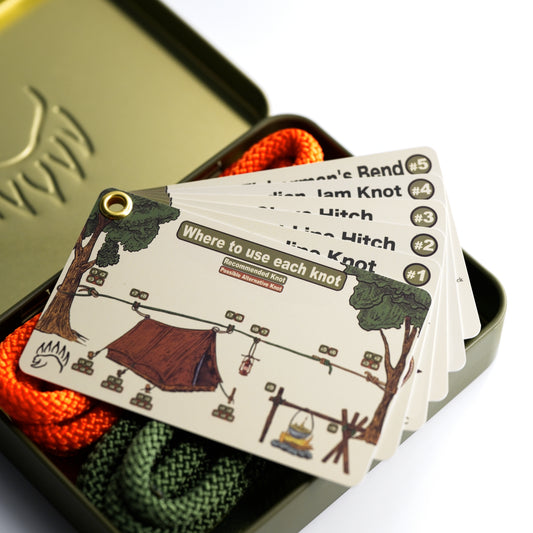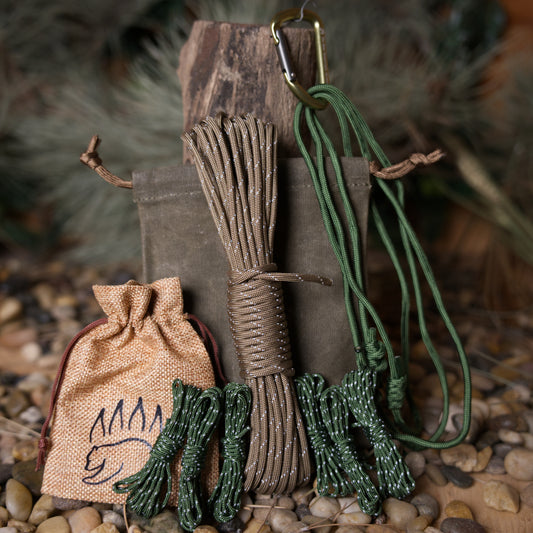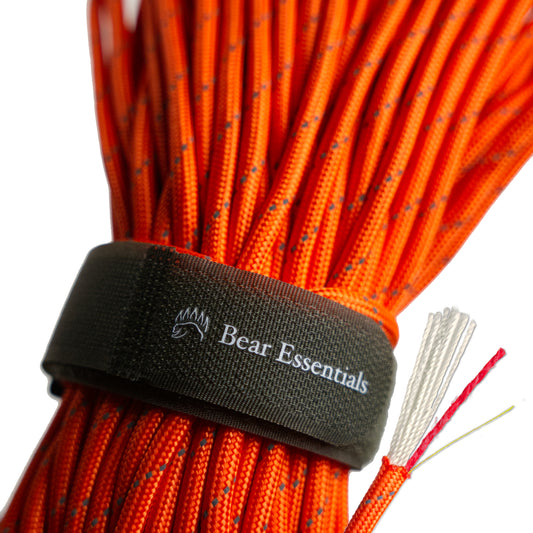How to Tie the Daisy Chain Knot
Usage
The Chain Sinnet, also known as the Daisy Chain Knot, combines functionality and aesthetics, making it ideal for both practical and decorative uses. It’s commonly employed to organize ropes, prevent tangling during storage, and add bulk or style to a line. Its quick-release feature ensures easy untying, making it a favorite for temporary applications.
Why Learn the Daisy Chain Knot?
Learning the Daisy Chain Knot equips you with a practical way to manage ropes efficiently. Whether you’re coiling a climbing rope, storing an extension cord, or crafting a decorative braid, this knot offers functionality and aesthetic appeal in one simple design.
Common Uses
-
Climbing and Outdoor Activities:
- Coiling ropes for storage or washing.
- Shortening ropes to prevent tangling.
-
Decorative Applications:
- Creating bracelets, keychains, or decorative braids.
-
Quick Release Functions:
- Securing ropes temporarily with the ability to quickly undo them.
ABOK Number
(Ashley Book of Knots)
Other Names
Category
|
Notable Features
- Quick Release: Easily unravels with a single pull.
- Aesthetic Appeal: Creates a symmetrical, chain-like pattern.
- Utility: Prevents tangles and adds bulk to ropes.
Variations
(No variations mentioned; section left blank.)
Similar Knots
Double Chain Sinnet Knot vs. Daisy Chain Knot
- Pros: Creates a shorter chain; ideal for long ropes.
- Cons: Slightly more complex to tie.
Crown Sinnet Knot vs. Daisy Chain Knot
- Pros: Highly decorative and symmetrical.
- Cons: Primarily for aesthetic purposes, not functional.
Square Sinnet Knot vs. Daisy Chain Knot
- Pros: Creates a dense braid, useful for crafting.
- Cons: Not suitable for quick release.
History
The Daisy Chain Knot, or Chain Sinnet, has been a popular knot for centuries. It is often taught to children as an introduction to knotting due to its simplicity and fun design. In climbing and ropework, it serves a practical purpose by preventing tangles and shortening ropes for easier handling. Its use in decorative arts, such as macramé and braiding, highlights its versatility.
Security Level
The Daisy Chain Knot is secure for temporary applications but is not designed for load-bearing purposes. Its quick-release nature makes it ideal for tasks where easy untying is a priority.
Downsides
- Can loosen under constant movement.
- Not suitable for maintaining tension in ropes.
Structure
- Form a slip knot at the working end of the rope.
- Pull a bight of the rope through the slip knot to form a new loop.
- Continue pulling bights through each loop to create the chain.
- To finish, pass the working end through the final loop and tighten.
- Undo the knot by pulling the free end to unravel the chain.
Pro Tip: Alternate the direction of each loop to prevent twisting when untying.
FAQ
What is the Daisy Chain Knot used for?
It is used to shorten ropes, prevent tangling, or create decorative designs.
Is the Daisy Chain Knot easy to untie?
Yes, it features a quick-release function that unravels the entire chain with a single pull.
Can the Daisy Chain Knot hold tension?
No, it is not designed for load-bearing or maintaining rope tension.
How does it compare to the Crown Sinnet Knot?
The Daisy Chain Knot is simpler and more functional, while the Crown Sinnet Knot is more decorative.
Important Notes on Safety
The Daisy Chain Knot is excellent for temporary applications and decorative purposes but should not be used in situations requiring tension or load-bearing. Ensure the rope is properly tied to avoid unintentional unraveling.









